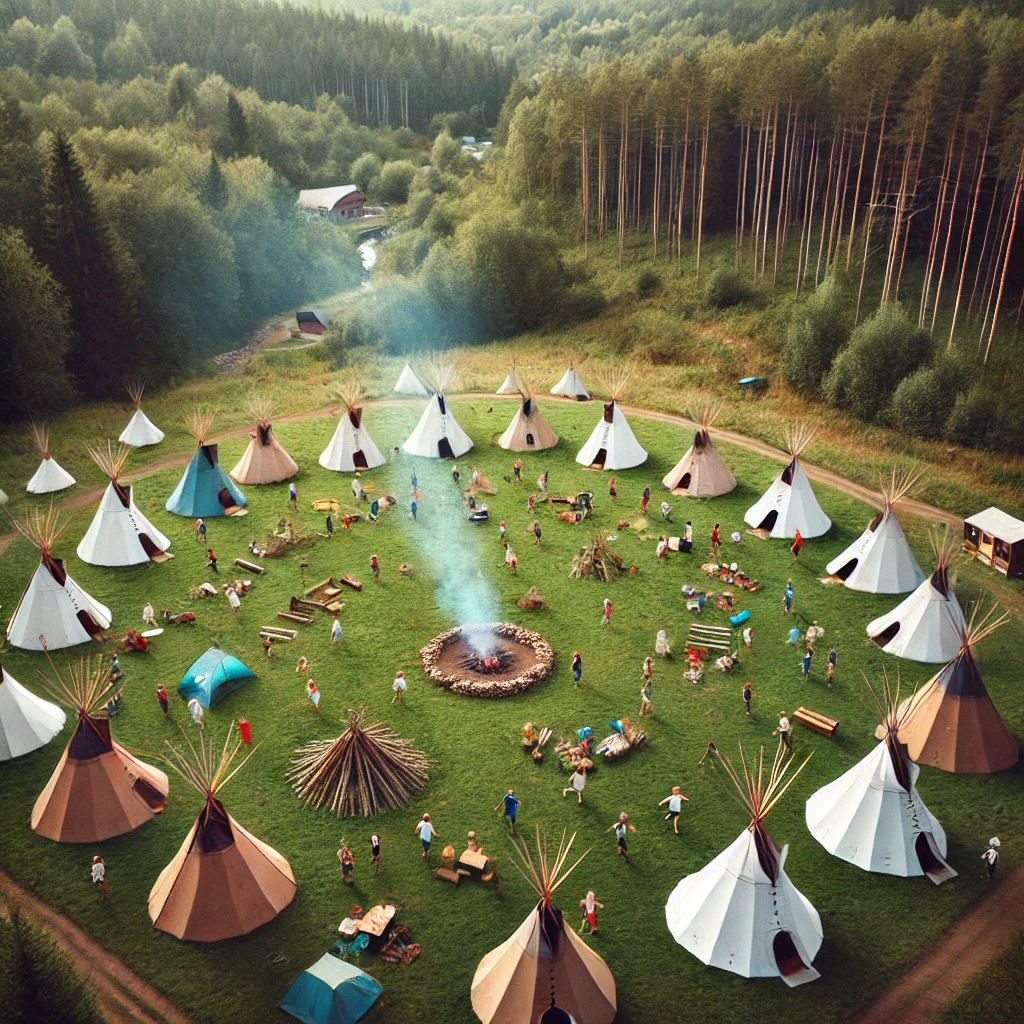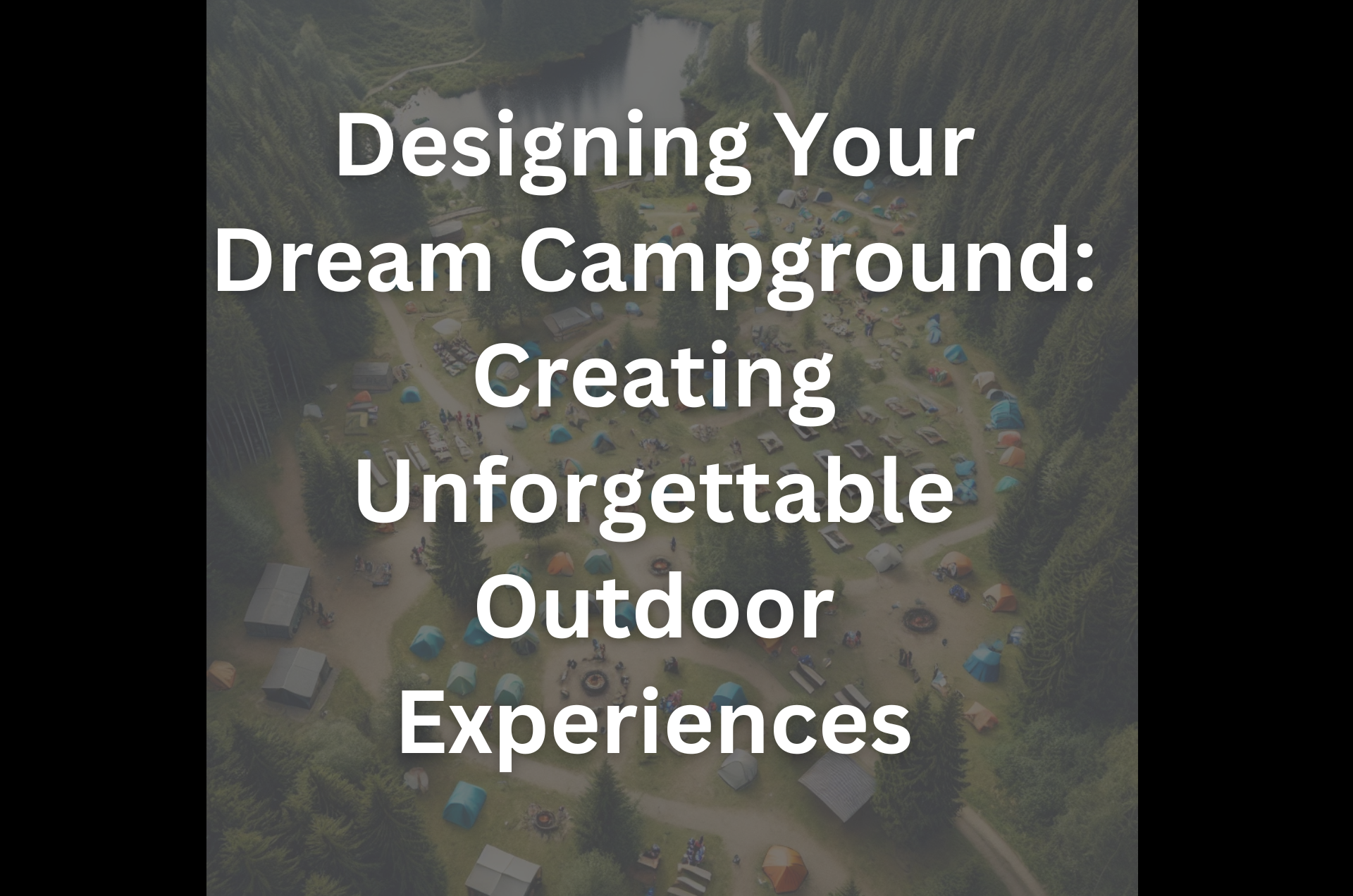**Disclosure:** We believe in honesty and transparency to the fullest extent. Some of the links on this blog are affiliate links, meaning, at no additional cost to you, we will earn a commission if you click through and make a purchase. This is one of the simplest ways you can support us.

As the camping industry continues to grow, campground owners have an exciting opportunity to design spaces that provide unique, enjoyable, and memorable experiences for guests. The design of your campground is crucial—it directly impacts whether campers will have a positive experience and want to return. In this post, we’ll explore key considerations for creating the ideal campground layout, offering essential facilities and amenities, and incorporating eco-friendly practices to attract a wide variety of campers.
1. Crafting the Perfect Campground Layout
The layout of your campground sets the stage for your guests’ overall experience. A well-thought-out design ensures smooth traffic flow, comfort, and ease of use for all visitors.
- Optimal Flow: Plan your campground with smooth access in mind, ensuring that pathways between campsites, bathhouses, and amenities are well-structured. This avoids congestion and confusion, making the site easy to navigate.
- Privacy and Spacing: Privacy is key. Campers appreciate having their own space, so provide enough distance between campsites to create a sense of personal space and tranquility. Buffer zones with natural features, such as trees or bushes, can enhance privacy.
- Utilize the Terrain: Leverage the natural landscape of your property. Design campsites around features like hills, forests, or water bodies to create a visually appealing and functional environment. Integrating nature into your design enhances the aesthetic and creates a more immersive experience for campers.
2. Essential Facilities for Comfort and Convenience
Facilities are the backbone of any successful campground. Providing well-maintained, clean, and accessible facilities ensures your guests feel comfortable during their stay.
- Clean Bathhouses: Well-maintained bathhouses are a non-negotiable feature. They should be easily accessible, spacious, and equipped with enough showers and toilets based on the campground’s capacity. Cleanliness is paramount, as it often directly impacts guest satisfaction.
- Electrical Hookups: Modern campers—especially RV owners—expect electrical access. Provide varying levels of service (e.g., 30-amp and 50-amp) to accommodate different needs, whether for tents, smaller RVs, or larger motorhomes.
- Water Supply: Ensure your campground has a reliable source of clean drinking water. Install water spigots in strategic locations, such as near campsites and common areas like bathhouses.
- Picnic Areas: Make outdoor dining easy by offering picnic tables and grilling stations at each campsite. For larger groups, consider communal picnic areas with covered pavilions, which can also be rented out for special events.
3. Enhancing the Experience with Additional Amenities
The right amenities can turn a good camping trip into a great one. Offering a variety of recreational activities and modern conveniences helps ensure guests of all ages and preferences enjoy their stay.
- Recreation Facilities: Consider adding activities like a swimming pool, playground, or sports courts (volleyball, basketball, etc.). These features encourage campers to stay active and spend more time at your campground.
- Wi-Fi Access: While some campers seek to disconnect from technology, others may still need internet access. Offering Wi-Fi in designated areas, such as near the general store or common spaces, can cater to both types of campers.
- Campground Activities: Organize engaging activities, such as nature walks, campfire sing-alongs, stargazing nights, or arts and crafts. These programs foster a sense of community among campers and make their stay more memorable.
- On-Site General Store: Having a well-stocked store that sells camping essentials, snacks, firewood, and even local goods can be a huge convenience for your guests. It also serves as an extra revenue stream for your business.

4. Embracing Eco-Friendly and Sustainable Practices
Sustainability is an increasingly important factor for today’s campers. Incorporating eco-friendly practices into your campground design not only appeals to environmentally conscious guests but also reduces long-term operational costs.
- Solar Power: Installing solar panels to generate electricity for common areas, bathhouses, or other facilities can help reduce your environmental impact and lower energy costs.
- Water Conservation: Implement water-saving techniques like low-flow faucets and showerheads, and educate campers on conservation efforts. Consider rainwater harvesting systems to reduce water waste.
- Waste Management: Create a robust recycling and composting program. Provide separate bins for recyclables, compost, and trash, and ensure they are clearly labeled to encourage proper waste disposal.
- Native Landscaping: Opt for native plants in your landscaping to reduce the need for excessive watering and support local wildlife. Native plants are typically hardier and require less maintenance, making them a sustainable choice for your campground.
Conclusion
Designing a campground is more than just setting up a few tents and fire pits—it’s about creating a welcoming environment that offers comfort, recreation, and an escape from everyday life. By focusing on thoughtful layout design, offering high-quality facilities, adding engaging amenities, and incorporating sustainable practices, you can build a campground that stands out from the competition and keeps campers coming back year after year.










